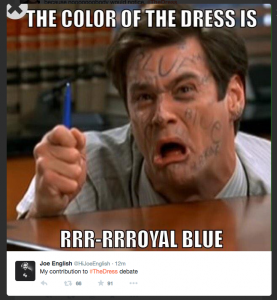Before you judge, let me make it clear that this is not an article about working during your vacation.
Mutant Communications enforces a healthy work-life balance and we are always encouraged to enjoy some downtime, whether it’s going out for Friday drinks, or taking a holiday. It reinvigorates the mind, makes you more productive, and chances are you’ll come back with more innovative ideas.
In fact, it took a recent holiday to make me realise how certain aspects of PR bleed into everyday life, and how I should start making the most of every situation.
The opportunities are especially abundant when you are travelling abroad.
This is the perfect time to take advantage of your “vacation mode” self – you are starting out on a clean slate in a foreign country, and you know very few people (or none at all). We are social creatures, and in this situation you naturally let your guard down and become more affable, eager to make friends, and to understand and immerse yourself in a different culture.
Keep the following PR tips in mind for your next holiday, and return fulfilled with valuable lessons and insights that you can apply at work!
1. “Your vibe attracts your tribe”
You are bound to make a few friends and acquaintances during your travels and if you’re at the right place at the right time, chances are you’ll get to meet the right people.
I was fortunate to have connected with some great folks who happen to be in the creative and lifestyle industry – the likes of artists, music producers, a website editor, and even someone in PR for a leading streetwear clothing label.
You get to learn a lot from these conversations with new people and asking the right questions. We ended up adding each other on Facebook, and some even on LinkedIn. This is one of the easiest and most convenient ways to connect with people, to learn from or potentially work with in the future. At the very least, what’s the harm in making new friends?
2. How to make yourself understood
Meeting new people is definitely a confidence booster. When you are engaged in a pleasant conversation, you inherently become more conscious about the flow and sounding coherent (especially if you’re attempting a conversation with someone who doesn’t speak the same language as you!)
One of the most common questions I got was about my profession, which led me to improvise a mental script to better explain what I do, about Mutant, and also about the music label I’m part of – all without droning on.
You learn how to ad-lib, while always improving on presenting yourself and your company in the best possible angle with strangers. It’s great practice for presentation skills, at the most basic level.
3. You can learn stuff from food (yes, really!)
One of the best ways to learn about a culture is to try the local food. There’s no need to splurge at a fancy and expensive restaurant for a good and unforgettable experience. I personally like to trawl the streets to discover a hidden gem – these places usually have impeccable service, run by friendly people and are typically more affordable.
By doing this, you can learn a few things and get inspired by the interior, atmosphere, meaningful conversations with staff and owners, and of course, the food.
I made a mental note on experiences I could bring back and share with our existing F&B clients, but these lessons easily transcend a specific industry, and can be applied to any professional environment.
Service and a positive attitude can do wonders with both clients and colleagues – it is something very simple, but often forgotten. I like to take myself back to these experiences to remind myself on the importance of harnessing and spreading positive energy.
4. Make a mental note at performances, gigs and festivals
This particular holiday was all about music gigs and festivals, and I definitely took away some valuable event management lessons from them.
At Mutant, we coordinate numerous events – the likes of launches, press conferences and media tasting – so I naturally observe how certain things such as timeliness, efficiency of ticketing, the sound system, and the presence of a good MC can greatly improve an event.
It is also through experience that you learn how to better prepare yourself for an event. For my Dour Festival Survival kit, I packed a vanilla yoghurt, a travel kit skincare set, and body moisturiser – all was deemed useless (except for the vanilla yoghurt). Next time, I’ll bring a pair of tights, windbreaker and gumboots to protect myself from the cold and rain! Lesson learnt.
5. Don’t forget to chill
“A vacation isn’t a luxury. It’s a medical necessity,” said Dr. Leigh Vincur, a spokesperson for the American College of Emergency Physician.
Remember to actually enjoy your break and release stress. Working in PR is a fantastic career, but it’s fair to say that you will reach a point where you need a holiday. You will do everyone in the office (and most importantly, yourself) a favour and return refreshed and more productive.
If you need more tips and advice on PR for F&B and lifestyle and luxury brands, get in touch with us at [email protected].


















